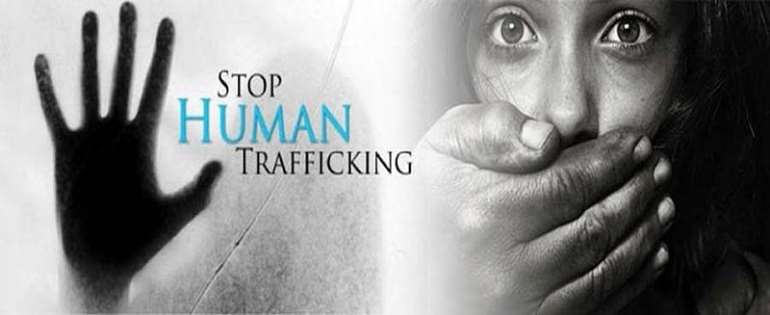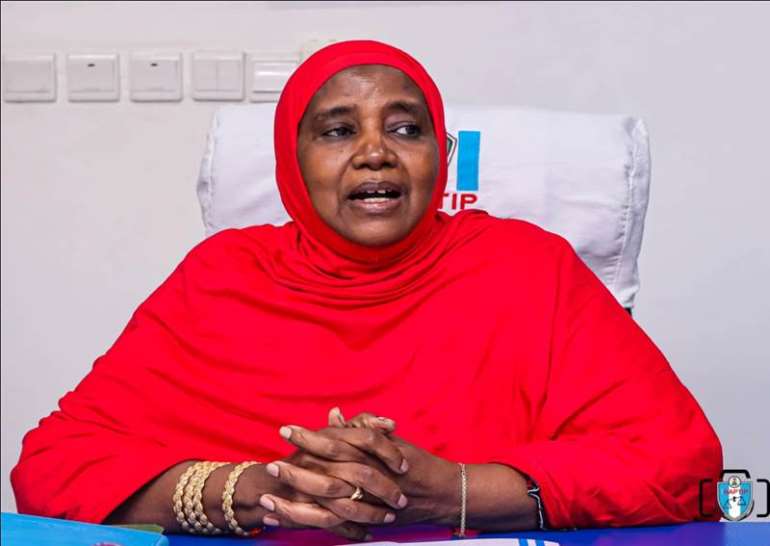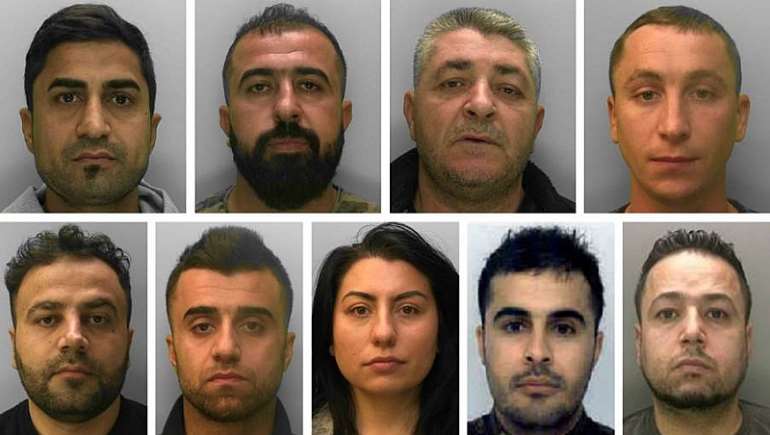Every year, July 30 is marked as World Day against Trafficking in Persons, a day set aside by the international community to reflect on one of the most grievous violations of human rights in modern times. Human trafficking, in all its abhorrent forms, continues to strip millions of people across the world of their dignity, freedom, and sometimes even their lives. It is an evil that has refused to die, despite decades of awareness campaigns, legislative actions, and international cooperation. The crime of trafficking in persons has persisted, evolved, and even grown in complexity, defying borders and legal systems with a kind of cruelty that reveals the darkest depths of human depravity.
The global scourge of human trafficking thrives in the shadows of desperation, poverty, conflict, inequality, and misplaced trust. Traffickers, well-organised and sometimes deceptively charming, lure their victims with promises of jobs, education, and a better life abroad or in the cities. Many young girls are promised modelling contracts or domestic work, only to find themselves locked in brothels and compelled to sell their bodies. Boys and young men are lured into forced labour, sometimes under appalling conditions in quarries, farms, construction sites, and sweatshops, with little or no pay. Others are recruited as child soldiers or used in illegal mining operations.
But perhaps the most chilling form of trafficking is organ harvesting, where innocent lives are cut short so that their body parts can be sold on the black market to desperate patients and criminal buyers. There have been documented cases, especially in parts of Africa, Asia, and Eastern Europe, where young people, often unaware of the true nature of their journey, are murdered and dismembered for ritual purposes or medical use. These acts are not merely illegal, they are fundamentally evil, representing a complete disregard for the sanctity of human life. A particularly haunting incident involved a child smuggled into the United Kingdom from Nigeria. Upon arrival, the authorities quickly apprehended the woman involved, prosecuting her and her husband for child trafficking. In a twist of fate, the child, recognised as a victim of the most heinous child trafficking offence in recent times was granted British citizenship and placed in foster care. His was a rare act of justice in a sea of untold tragedies. For every such rescued child, there are countless others who vanish into the shadows, never to be seen or heard from again.

This ongoing tragedy demands an understanding of the complex web of factors that enable trafficking in persons to happen. Top among them is poverty. In regions where economic hardship is widespread and social safety nets are fragile, families become vulnerable to the enticing promises of traffickers. Unemployment and lack of access to quality education leave young people especially susceptible to migration scams. In some cases, entire communities have become complicit, knowingly or unknowingly supporting traffickers who pose as philanthropists, recruitment agents, or travel coordinators. Another contributing factor is armed conflict and political instability.
War zones and post-conflict societies create fertile grounds for traffickers, who exploit the chaos to kidnap or coerce displaced persons. Refugee camps, where oversight is often weak, have been hotspots for child recruitment, forced marriages, and sexual exploitation. Human trafficking is also closely linked to gender inequality, where cultural norms devalue girls and women, making them disproportionately affected by sexual trafficking and domestic servitude.
Corruption within law enforcement and immigration systems is another enabler of this criminal enterprise. When officials are bribed or compromised, traffickers are emboldened. Victims are often afraid to speak out, fearing retribution or deportation. In some jurisdictions, victims are treated as criminals, further traumatising them and discouraging others from seeking help. In certain cultures, stigma and shame prevent families from acknowledging or reporting the disappearance or abuse of their loved ones, making it easier for traffickers to operate with impunity.
Despite these challenges, governments around the world have not been entirely silent. Many have passed robust anti-trafficking laws, established specialised agencies, and partnered with international organisations to clamp down on the syndicates behind this trade. The United Nations Office on Drugs and Crime (UNODC), through its Global Report on Trafficking in Persons, has helped raise awareness, build capacity among member states, and coordinate cross-border investigations. Interpol and Europol have facilitated numerous international sting operations, rescuing victims and apprehending traffickers.
In Nigeria, the National Agency for the Prohibition of Trafficking in Persons (NAPTIP) has made some commendable efforts. The agency has rescued hundreds of victims, prosecuted traffickers, and partnered with civil society to run awareness campaigns, especially in high-risk states. Yet, the problem persists. In Italy and Libya, Nigerian girls are disproportionately represented among those trafficked for sex work. In the Middle East, cases of young women being exploited as domestic workers under slave-like conditions continue to surface.

Lami Bello NAPTIP D-G
Across Europe and North America, governments have implemented visa reforms and stricter border checks aimed at curbing trafficking. Yet, while these measures may reduce the flow of illegal migration, they also push traffickers to find more covert and dangerous routes, increasing the risk for victims. The United States’ annual Trafficking in Persons (TIP) Report remains a key tool for naming and shaming countries that fail to meet minimum standards in tackling trafficking. But critics argue that while naming and sanctioning can be effective, they sometimes alienate rather than support under-resourced countries that need assistance rather than punishment.
There are also concerns about the inconsistent application of justice. In many countries, traffickers receive light sentences or escape justice entirely due to weak prosecutions, lack of evidence, or corruption. Meanwhile, victims are often criminalised for immigration violations, prostitution, or identity fraud, offences they were compelled to commit under duress. Shelters and rehabilitation centres are underfunded, and victims often lack access to counselling, medical care, or legal aid. Without proper reintegration, many fall back into the same cycles of abuse. Given these realities, what more can governments and organisations do to ameliorate, if not completely halt, the evil of human trafficking?
Firstly, prevention must be prioritised. Public awareness campaigns need to be scaled up in vulnerable communities, using local languages and cultural contexts to explain the dangers of trafficking and the tactics used by traffickers. Parents, schools, and religious institutions must be engaged as frontline defenders. Education and economic empowerment of young people, especially girls, must be seen as the strongest antidotes to vulnerability.

Human trafficking gang based in East Sussex
Secondly, victim protection must be more humane and comprehensive. Trafficked persons must be treated not as criminals, but as survivors. Governments should invest in safe shelters, trauma counselling, vocational training, and legal representation for victims. Reintegration programmes must be tailored to ensure that survivors can rebuild their lives with dignity and security. International donors and organisations should provide the technical and financial support necessary to sustain these programmes, particularly in developing nations.
Thirdly, law enforcement needs to be strengthened. Police officers, immigration officials, prosecutors, and judges must be trained to recognise trafficking, investigate effectively, and prosecute cases to the full extent of the law. Special courts for trafficking cases, fast-tracked trials, and mandatory sentencing guidelines can help reduce the backlog and ensure deterrence. Moreover, whistleblower protection laws should encourage those with information about trafficking rings to come forward without fear of reprisal. Fourthly, cross-border cooperation is critical. Trafficking is often a transnational crime that requires coordinated action across jurisdictions. Intelligence sharing, joint operations, and mutual legal assistance must be institutionalised. Embassies and consulates can also play a role in identifying and assisting citizens trapped in trafficking situations abroad. International protocols such as the Palermo Protocol must be ratified, domesticated, and implemented fully by all nations.
Technology must also be harnessed in the fight against trafficking. Data analytics, biometric identification, and artificial intelligence can be used to detect suspicious migration patterns, monitor trafficking hotspots, and profile known traffickers. Social media platforms and online job portals must take greater responsibility for ensuring their platforms are not used to lure victims. Tech companies must work hand-in-hand with authorities to flag suspicious content and dismantle trafficking networks operating online.
On this World Day against Trafficking in Persons, a clarion call must be sent to all: individuals, organisations, and governments. Every one of us has a role to play in ending this evil practice. For individuals, especially those in high-risk areas, vigilance is key. Never trust job offers that seem too good to be true. Always verify the credentials of agents, recruiters, and travel facilitators. Parents must maintain open communication with their children and guide them wisely on the dangers of irregular migration.
For communities, cultural change is essential. We must break the silence around trafficking, reject the stigma faced by survivors, and report suspicious activity promptly. Community leaders, religious figures, and traditional rulers must use their platforms to speak out and mobilise support for vulnerable members of society.
For organisations—both governmental and non-governmental—collaboration and innovation are paramount. Civil society organisations must continue to document cases, advocate for policy reforms, and support survivors. Donor agencies must channel resources towards sustainable anti-trafficking programs. Media organisations must prioritise investigative journalism that exposes trafficking rings and highlights the human stories behind the statistics. And for governments, now is the time to act with urgency, resolve, and compassion. It is not enough to pass laws or make speeches. Budgets must reflect priorities. Anti-trafficking agencies must be well-resourced, independent, and accountable. International commitments must be translated into domestic realities. Justice must be blind, impartial, and swift.
In conclusion, trafficking in persons is not merely a legal or moral issue—it is a fundamental test of our shared humanity. It challenges us to examine the kind of world we are building, the values we uphold, and the future we want for our children. No one should ever be bought, sold, or exploited. And while the fight may be long and difficult, we must never relent. For every victim rescued, for every trafficker brought to justice, and for every life rebuilt, we inch closer to a world where human dignity is protected and preserved. Everything possible must be done to stop the evil practice of human trafficking. That is not just a slogan. It is a call to conscience. It is a mandate for action. And it is the moral obligation of our time.


